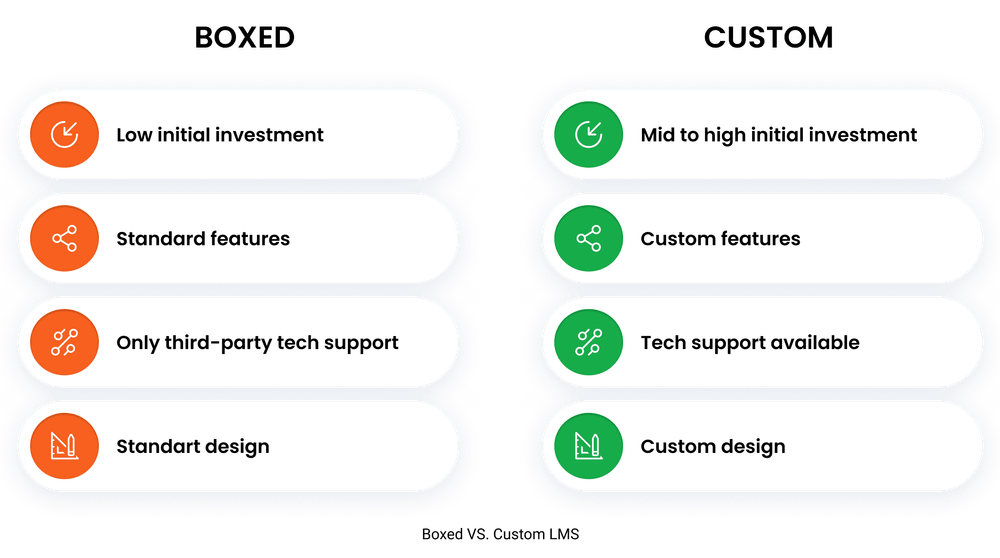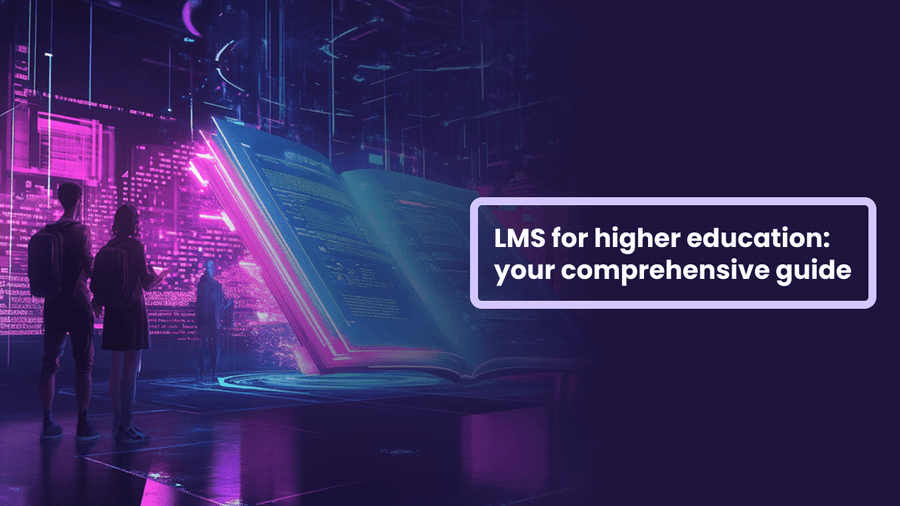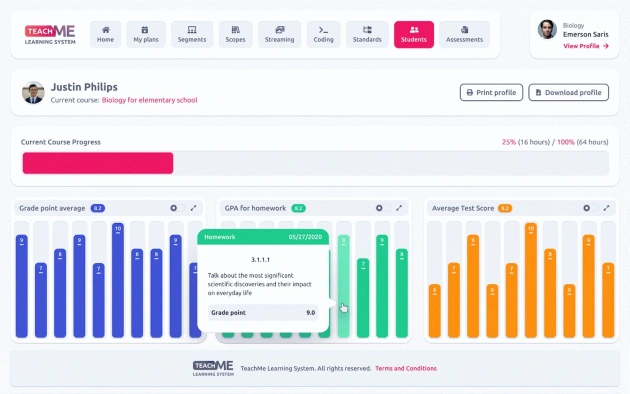Introduction
When the COVID pandemic hit, many schools realized that they needed to automate learning. Yet, as we’re getting back to normal, schools still need a way to keep their courses available online.
A report says that the market for Learning Management Systems (LMS) grows 30% yearly. Moreover, half of the growth comes from the US and Canada.
To understand this digital transformation, let’s take a look at Learning Management Systems.
By the end of this article, you’ll know what makes a good LMS for higher ed. You will also learn how to choose one.
What is an LMS
A learning management system (LMS) is a software product that handles all learning materials.

Higher education Vs. K-12 LMS
To an extent, Learning management systems for K-12 and higher education are quite similar. In both cases, an LMS is a place where students can learn and collaborate online.
But the devil is in the details.
Some of the features can be different, and here are some examples:
- Parents mode. LMS for K-12 should grant parents access to their kids’ grade reports. In higher education, this is typically not the case. Only students, instructors, and school administrators can see grades there.
- Standards. These are helpful whether the LMS is built for a K-12 school or a university. But in the US and Canada, K-12 is a much more regulated field than higher education. Protocols like LTI® or OneRoster® are obligatory there, unlike in higher education.
- Course creation. In higher education, every instructor needs to build their own courses in the LMS. They can’t upload premade courses. Meanwhile, K-12 schools can upload standard course material made by other teachers.
Overall, an LMS for a university can be much cheaper to build than one for K-12. That is because they tend to be more simple than their K-12 counterparts.
Cloud Vs. on-premise LMS
When you look for a college or university LMS, you’ll need to choose between cloud or on-premise storage. Here’s what you need to consider.
On-premise LMS will keep your data on your own servers.
Schools typically use an on-premise LMS when they make a lot of custom features and integrations.
Another advantage is privacy. Since you own the server, you truly own your data.
On-premise LMS is going to be more expensive because you’ll have to pay for the servers, the implementation, and the upkeep. But if you value privacy or customization, go for it.
Cloud LMS will store all the data online, usually on the server of the LMS provider. With cloud storage, you’ll need to pay a fee for each month of server use.
With cloud storage, you can set up the LMS much faster, because most of the engineering has already been done by the cloud service provider.
Schools also choose this option for the low initial costs. Cloud storage is typically cheaper because you don’t have to worry about server maintenance.
Choose Cloud LMS when you want a simple and cheap solution, and you don’t mind storing data on third-party servers.
Boxed Vs. custom LMS
A college that wants to create or upgrade its LMS faces the choice between boxed or custom software.
Here’s what you can look out for when choosing your LMS:
Costs. Boxed solutions are cheaper in short term. In fact, some LMS providers offer very cheap options for small schools that don’t use a lot of content.
But if you want to use a content-heavy boxed LMS that would support hundreds of students, it’s not going to be free. The fees will add up over the years and can get more expensive than a custom product.
Yet, a custom LMS can also include additional fees after launching. A school can pay for software updates, bug fixes, etc.
In the end, the price will depend on the specific package of the boxed LMS or the features of the custom LMS. Compare several options to find out which one suits you best.
Features. Boxed LMSs are usually quite rigid in terms of features. They will cover the basics, like viewing content or passing tests.
On top of that, a boxed LMS has a set number of features. When you get such a solution, you end up paying for some features that you don’t need. This way, a boxed LMS may end up being more expensive and cluttered.
Some schools want to stand out with advanced technology like AR, learning games or interactive materials. For that, they get a custom LMS. At the moment, there are no available LMSs that support AR out of the box.
A compromise would be to hire developers to customize the boxed LMS. Still, if you need to build multiple plugins, it can be cheaper to build a custom LMS from the ground.
With custom software, you get to choose how to store your data. It can be either Cloud and On-Premise options. Most commercial platforms focus on cloud storage, though some offer you to choose between the cloud and on-premise options.
Design. Boxed solutions often allow changing theme colors or even fonts. But the overall design of a platform will remain the same.
When you build a custom solution, you can create a unique design that would convey your school’s style.
You can say that about the content structure as well. A boxed LMS forces instructors to build courses in a specific way that was set up by the LMS provider.
With a custom platform, you get to choose how to set up courses, tests, and learning materials.
Tech support. Popular boxed solutions like Moodle or Canvas don’t have dedicated tech support. Instead, their customers rely on knowledge bases. They can also reach out to a third-party tech support company that specializes in your boxed LMS.
Still, schools that go with boxed LMSs usually have IT staff to keep up the system. Meanwhile, with a custom-made LMS, you can reach out to your vendor for technical help.

How to choose an LMS?
Universities and colleges may not know in advance, which features they’ll need. That’s perfectly fine.
After all, an LMS is arguably the main software product for a school. There are so many features that it’s hard to grasp everything.
That’s why we built Aristek eLearning LMS. The platform takes the best from custom and off-the-shelf software. You can start with our ready-made solution and fully customize it at any point. It’s scalable, too.
If you need any help with choosing an LMS that will fit your needs, feel free to reach out. We have 22 years of experience in eLearning and will be glad to help you out.






